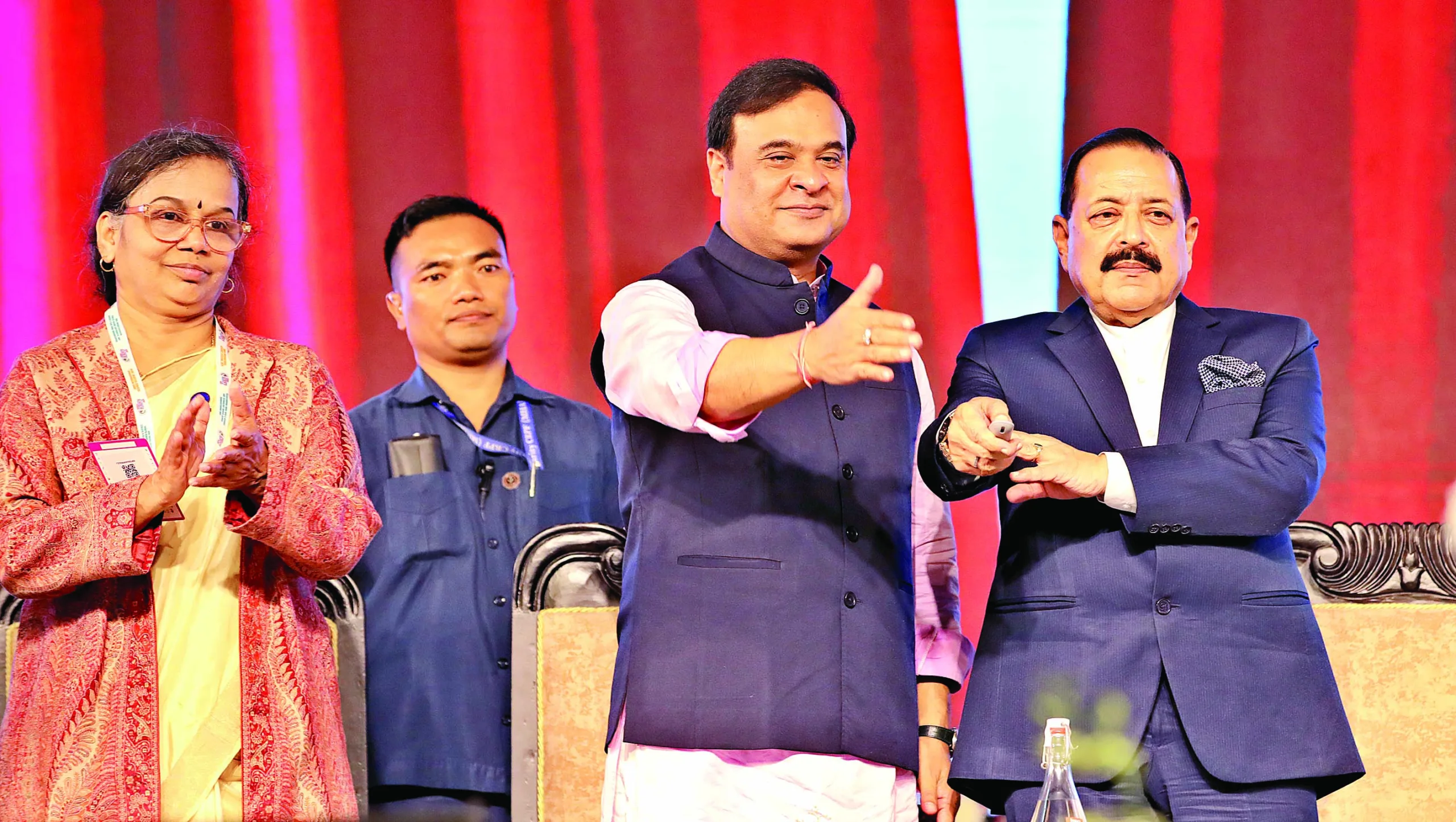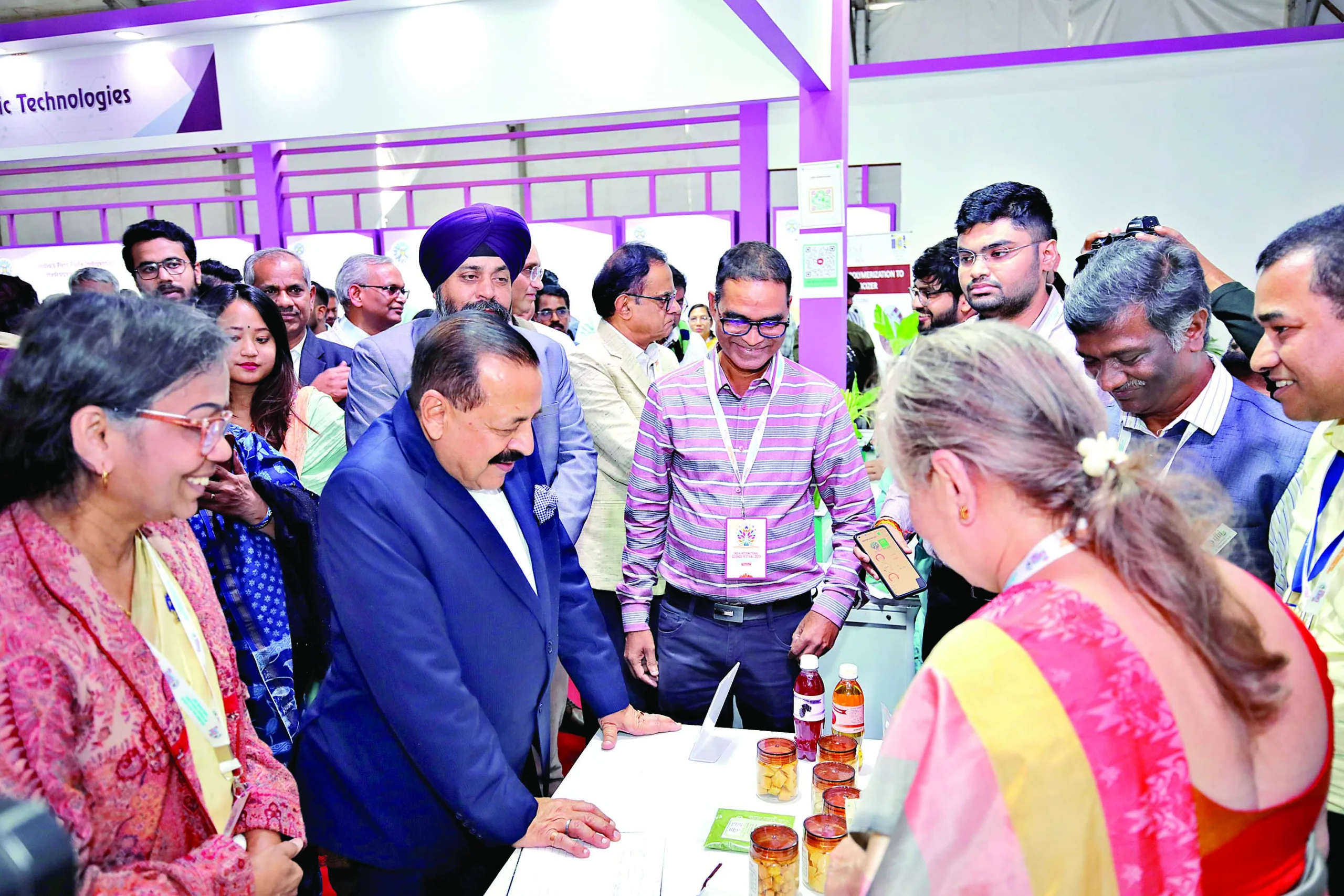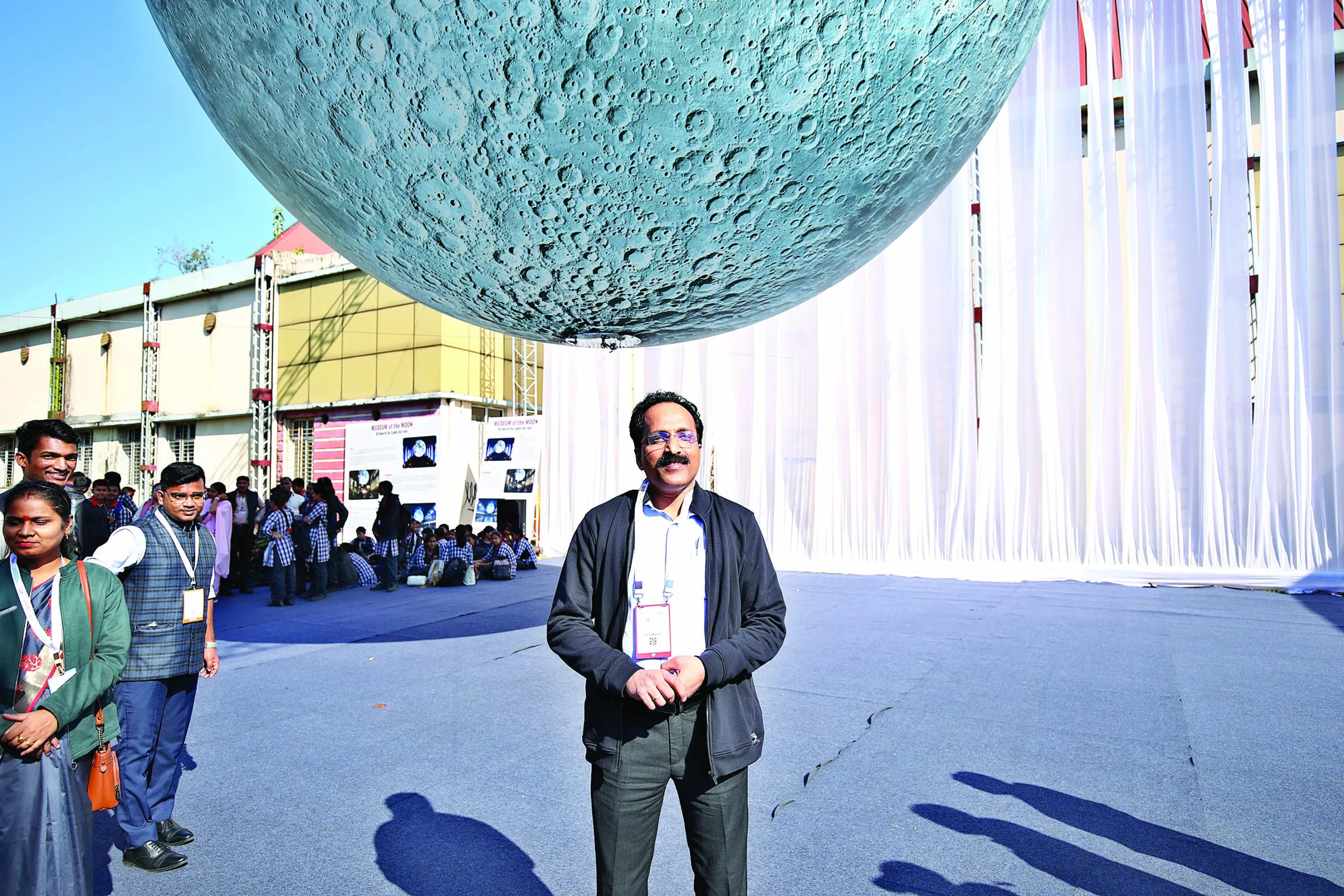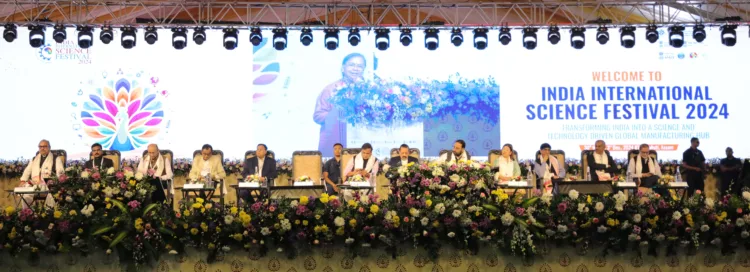The 10th India International Science Festival (IISF 2024), hosted at the Indian Institute of Technology, Guwahati, emerged as a landmark event in India’s science and technology landscape. Organised under the auspices of the Ministry of Science and Technology and the Ministry of Earth Sciences, this four-day festival showcased the nation’s advancements in science, technology, and innovation, with a strong emphasis on achieving self-reliance and global leadership by 2047. The festival drew over 45,000 participants, including scientists, policymakers, students, and innovators from across the country, making it a dynamic confluence of ideas, inspiration, and collaboration.
A Visionary Inauguration
The festival opened on November 30 with a grand ceremony, featuring an array of esteemed dignitaries, including Dr Himanta Biswa Sarma, Chief Minister of Assam, Dr Jitendra Singh, Union Minister of State (Independent Charge) for Science and Technology, and leaders from India’s premier scientific institutions such as the Council of Scientific and Industrial Research (CSIR), Department of Atomic Energy (DAE), Department of Biotechnology (DBT), and Department of Science and Technology (DST).

Dr Himanta Biswa Sarma, in his inaugural address, underscored the significance of IISF 2024 in celebrating India’s scientific spirit. “This festival epitomizes our collective efforts in fostering innovation and collaboration. Through events like the Science Safari and Young Scientists’ Conclave, IISF inspires young minds and showcases India’s achievements, including Chandrayaan-2. It is a reflection of our journey toward becoming a global leader in innovation.”

Dr Jitendra Singh highlighted India’s progress under Prime Minister Narendra Modi’s leadership. “India’s growth story is rooted in the transformative power of science and technology. From space exploration to quantum computing, we are leading in multiple domains. With initiatives like the National Research Foundation and a thriving startup ecosystem, India is empowering its youth to shape a brighter future.”
Thematic Focus Areas
IISF 2024’s theme revolved around leveraging innovation and technology to address critical challenges and foster economic growth. The festival featured 25 events, each aligned with India’s broader vision for science-driven development.
- Science Beyond Borders : This initiative promoted global partnerships by bringing together researchers, scientists, and institutions from around the world. Through panel discussions and collaborative workshops, the event addressed pressing global challenges in areas such as climate change, sustainable development, and healthcare.
- Fusion Forum – The Atomic Assembly : Dedicated to nuclear science, this event explored the role of atomic energy in sectors like power generation, healthcare, and agriculture. Discussions also highlighted the challenges of integrating nuclear technologies in India’s sustainable development agenda.
- Sagarika – The Tale of Earth Sciences : Aimed at raising awareness about meteorology, oceanography, and ecological preservation, this event featured interactive exhibits and educational sessions to inspire environmental stewardship.
- Science Odyssey of the North East : This event addressed the unique challenges faced by the North East region in scientific development. Policymakers and academicians explored strategies to strengthen research infrastructure and foster innovation in the region.
- The Taste of the Hills – North East Food Street : Adding a cultural dimension, this exhibit showcased the rich culinary heritage of North East India, drawing attention to the region’s biodiversity and food traditions.
A Platform for Innovation
The festival also served as a launchpad for groundbreaking initiatives and discussions, focusing on themes like sustainable manufacturing, healthcare innovations, and digital transformations. The Guwahati Declaration, unveiled during the event, committed India’s scientific community to transforming the nation into a global manufacturing hub by 2047.
ISRO Chief Inspires Young Minds at Student Science Interaction
Dr S Somanath, Chairperson of the Indian Space Research Organisation (ISRO), captivated school students during the “Student Science Interactive Program – Face to Face with New Frontiers in S&T.” Engaging directly with young learners, he inspired them to envision careers in science and technology, emphasizing the transformative potential of innovation in space research.

During the session, Dr Somanath shared an empowering message:
“As students, you are the torchbearers of the future in science and technology. It is essential for you to grasp the remarkable innovations and advancements taking place in these fields today. By recognizing their potential and the opportunities they present, you can draw inspiration to pursue similar paths and contribute to building a brighter tomorrow.”
He also underscored the significance of active engagement in scientific pursuits, stating:
“Reflecting on our current scientific and technological endeavors, your enthusiastic engagement is pivotal in realising the vision of making India a global leader.”
Dr N Kalaiselvi, Director-General of CSIR, emphasised this vision: “The Guwahati Declaration reflects our dedication to nurturing innovation, fostering sustainability, and driving India’s journey towards self-reliance. IISF 2024 has been instrumental in strengthening the bond between science and society, inspiring young minds, and promoting collaborative research.”
Engaging the Youth
One of IISF’s standout features was its focus on youth engagement. Events like the Young Scientists’ Conclave and Tinker Labs encouraged students to delve into hands-on experimentation and innovative problem-solving.
Dr Kalaiselvi noted, “India’s young innovators are at the forefront of our scientific revolution. IISF provides them with the platform to showcase their talents, learn from industry leaders, and contribute to shaping our nation’s future.” The festival also celebrated women’s contributions to STEM fields through the Nari Shakti initiative, which highlighted the achievements of female scientists and entrepreneurs.
Inspiring Exhibitions
IISF 2024 featured several engaging exhibits, including:
- Saga of Science Chronicles: An LED light show narrating the history and milestones of Indian science.
- The Museum of the Moon: A breathtaking art installation by British artist Luke Jerram, featuring a detailed replica of the moon’s surface.
- S&T Media Conclave: This event brought together journalists, communicators, and scientists to discuss strategies for effective science communication.
High-Impact Discussions
The festival hosted more than 150 technical sessions and panel discussions, covering diverse topics such as quantum computing, biotechnology, and climate resilience.
- Sustainability Roundtable: Experts discussed innovative approaches to achieving net-zero emissions and promoting green energy solutions.
- Healthcare Innovation Summit: Sessions focused on leveraging AI and biotechnology for affordable and accessible healthcare.
- Manufacturing Vision 2047: Industry leaders explored strategies to position India as a global hub for advanced manufacturing.
Empowering the North East
A unique aspect of IISF 2024 was its emphasis on the Northe East region. Over 50% of the participants were from the region, reflecting the festival’s commitment to inclusive development. Assam’s Minister for Science and Technology, Keshab Mahanta, remarked during the valedictory session, “IISF 2024 has been a remarkable celebration of India’s scientific achievements. Assam is honored to host this event, reaffirming our commitment to advancing science and technology in the region.”
A Transformative Conclusion
The valedictory session saw leaders expressing their optimism for India’s future in science and innovation. Dr Kalaiselvi concluded with a call to action: “As we approach India@2047, the scientific community must work collectively to drive impactful initiatives, nurture young talent, and ensure sustainable development.”
Chandrayaan’s Triumph Celebrated at IISF 2024 in IIT-Guwahati
A stunning 10-metre-high replica of the moon has become a centerpiece at the IIT-G campus, commemorating the success of India’s Chandrayaan mission. Installed as part of the IISF hosted in the North East, the replica is a highlight of the festival’s 10th edition, which began on Saturday.
Organised by the Council of Scientific and Industrial Research (CSIR) under the aegis of the Ministry of Science and Technology and the Ministry of Earth Sciences, IISF 2024 is a collaborative effort involving the Department of Atomic Energy, Department of Space, IIT-Guwahati, and Vijnana Bharati. This breathtaking lunar art installation, measuring about seven meters in diameter, is the creation of British artist Luke Jerram. It features a detailed 120 dpi NASA imagery of the lunar surface at an approximate scale of 1:500,000. In addition to the lunar replica, the “Museum of the Moon” initiative includes a science, technology, and space expo, open to visitors free of charge, offering an enriching experience that bridges art, science, and India’s growing space ambitions.
The festival’s success underscored its pivotal role in inspiring collaboration, fostering innovation, and aligning India’s scientific goals with its vision of becoming a global leader by 2047.
A Festival to Remember
With its dynamic mix of thematic events, youth engagement, and thought-provoking discussions, IISF 2024 has set a benchmark for future science festivals. As India advances on its path to self-reliance and global prominence, events like IISF will continue to play a crucial role in shaping the nation’s scientific and technological landscape.



















Comments